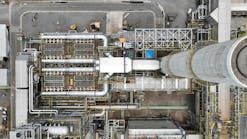EPA proposes sulfur cut in move toward California gasoline
US refiners would need to lower the sulfur content of gasoline to levels in place in Europe and elsewhere under a Mar. 29 proposal by the Environmental Protection Agency aimed at aligning federal regulations with those in effect in California.
The agency’s Tier 3 regulations call for a reduction in gasoline sulfur content to 10 ppm from a present average of 30 ppm. They also call for cuts in vehicle tailpipe and evaporative emissions in a package EPA said would move federal requirements toward strict standards in effect in California.
The proposed sulfur limit matches that of “Euro 5” gasoline in Europe. Comparable standards are in effect in Japan, South Korea, and several other countries, as well as in California. EPA said its Tier 3 proposal “is harmonized with the California Air Resources Board [CARB] Low Emission Vehicle program so automakers could sell the same vehicles in all 50 states.”
EPA’s Mar. 29 proposal omitted direct action on gasoline volatility, which had been part of earlier versions of the proposal. But reference to harmonization with CARB standards implies such a move might be necessary.
The CARB flat limit for gasoline Reid vapor pressure is 7 psi for oxygenated fuel and 6.9 psi for nonoxygenated. Volatility standards vary geographically across the US, but commonly are about 7.8 psi rvp during summer and 9 psi rvp at other times.
The proposal
EPA proposes that the 10 ppm gasoline sulfur limit take effect on an average annual basis by 2017. It also proposes either to maintain the current 80-ppm refinery gate and 95-ppm downstream caps or to lower those caps to 50 ppm at the refinery gate and 65 ppm downstream.
The proposal includes a program for averaging, banking, and trading to spread out investments through an early credit program and rely on nationwide averaging to meet the lower sulfur standard.
Small refiners and refiners processing 75,000 b/d of crude oil or less would receive a 3-year compliance delay.
EPA also proposes to adjust the federal emissions test fuel “to better match today’s in-use gasoline and also to be forward-looking with respect to future ethanol and sulfur content.” The new test fuel would contain 15 vol % ethanol, lower octane, and lower sulfur content. For the first time, EPA proposes test-fuel specifications for 85-15 ethanol-gasoline blends (E85).
For vehicles, EPA proposes to lower the fleet average standard for tailpipe emissions by light-duty vehicles of nonmethane organic gases (NMOG) and nitrogen oxides (NOX) by about 80% from current levels. It would cut allowable particulate matter (PM) emissions by about 60% per light-duty vehicle.
Proposed heavy-duty tailpipe standards represent reductions of about 60% for fleet average NMOG+NOX and per-vehicle PM. The proposal would extend the regulatory useful life period during which standards apply to 150,000 miles from 120,000 miles.
Tailpipe standards would phase in on schedules varying by vehicle class but generally would take effect between model years 2017 and 2025.
For fuel vapor-related evaporative emissions, EPA proposes about a 50% reduction for all light-duty and onroad gasoline-powered heavy-duty vehicles. The regulatory useful-life period during which the standards apply would increase as proposed for tailpipe standards.
Refinery adjustments
Lowering sulfur-content limits for gasoline mainly will require refiners to add hydrotreating capacity upstream and downstream of fluid catalytic crackers. The new capacity will require new inputs of hydrogen, which some refiners might have available in sufficient quantity from onsite steam methane reformers and catalytic reformers and others would have to purchase.
In a March 2012 study for the American Petroleum Institute, Baker & O’Brien Inc. predicted refinery hardware changes necessitated by a lowering of gasoline sulfur with no accompanying change in volatility standards.
Such a change, it concluded, would require one new FCC feed hydrotreater and 13 new FCC gasoline hydrotreaters in the US. It also would require revamps and expansions to 23 FCC feed hydrotreaters and 33 FCC gasoline hydrotreaters, requiring total investment of $9.766 billion.
Baker & O’Brien foresaw no refinery closures associated with a sulfur-only regulatory tightening. The annualized increase in net hydrogen purchases in that case would be 129 MMscfd (calendar).
In an earlier study, the consultancy examined a range of possible regulatory changes for gasoline involving both sulfur-content and volatility reductions. That study projected the closure of four to seven refineries, the higher number resulting from assumption of a 5 ppm sulfur cap and summertime 7 ppm rvp limit. In that case, Baker & O’Brien projected investment required for compliance totaling $17.343 billion.
Reasons and responses
EPA said lowering the sulfur content of gasoline would improve the effectiveness of emission-control systems aboard new and existing vehicles and “would enable more stringent vehicle emissions standards since removing sulfur allows the vehicle’s catalyst to work more efficiently.”
The agency said its proposed regulation would improve public health by lowering vehicle emissions of NOX, volatile organic compounds, direct PM, carbon monoxide, and air toxics.
It also would be “aligned with and designed to be implemented over the same timeframe” as its program for cutting greenhouse-gas (GHG) emissions from light-duty vehicles starting in model-year 2017.
EPA estimated its proposal would raise the price of gasoline by 1¢/gal.
The oil and gas industry disputed the need for new gasoline standards and warned of fuel prices higher than EPA’s estimate.
American Petroleum Institute Downstream Group Director Bob Greco said, “There is a tsunami of federal regulations coming out of the EPA that could put upward pressure on gasoline prices.” He said the new requirements would increase GHG emissions “because of the energy-intensive equipment required to comply.”
Citing the Baker & O’Brien study, an API statement estimated the sulfur-only proposal would raise the price of gasoline by 9¢/gal. If accompanied by tougher volatility standards, the increase could be as much as 25¢/gal, it said.
American Fuel & Petrochemical Manufacturers Pres. Charles T. Drevna said, “Tier 3 rulemaking that targets trace amounts of sulfur in gasoline is not worth the direct threat to our domestic fuel supply, consumer cost at the pump, and American jobs.”
Drevna said EPA “has not previously offered any cost-benefit analysis to justify this onerous rulemaking.”
AFPM estimates Tier 3 regulation would require investment of $10 billion in new infrastructure and new operating costs of $2.4 billion/year.
Contact Bob Tippee at [email protected].

Bob Tippee | Editor
Bob Tippee has been chief editor of Oil & Gas Journal since January 1999 and a member of the Journal staff since October 1977. Before joining the magazine, he worked as a reporter at the Tulsa World and served for four years as an officer in the US Air Force. A native of St. Louis, he holds a degree in journalism from the University of Tulsa.
